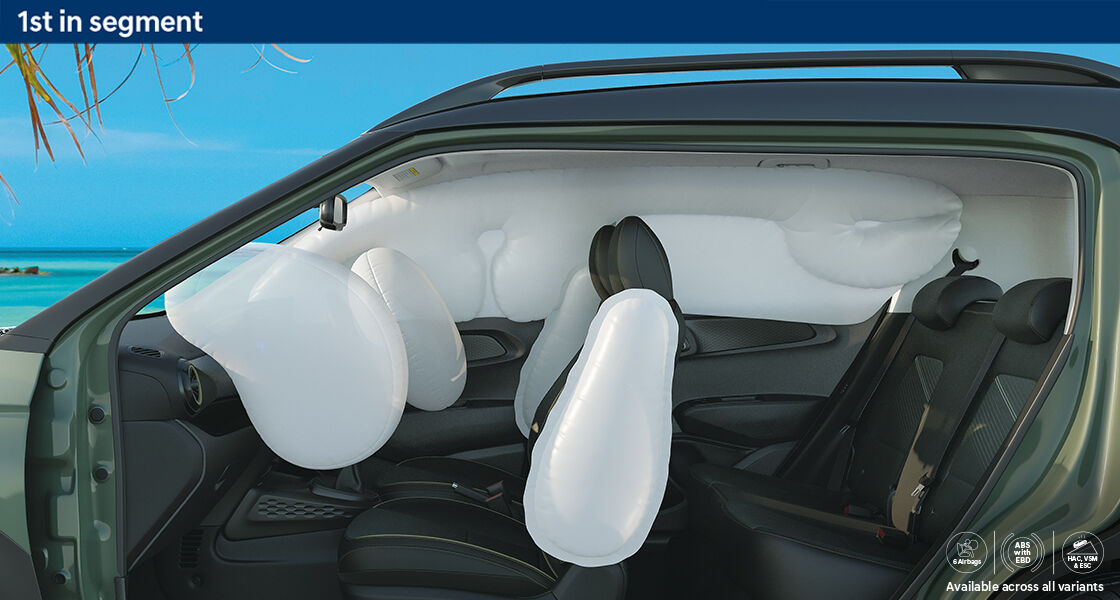In the ever-evolving landscape of automotive safety, Hyundai has emerged as a frontrunner, consistently integrating advanced technologies to enhance driver and passenger safety. From innovative driver assistance systems to robust structural designs, Hyundai cars are equipped with features designed to mitigate risks and protect occupants. This article explores key safety features offered by Hyundai, backed by research, case studies, and statistics.
Introduction to Hyundai’s Commitment to Safety
Hyundai Motor Company has prioritized safety as a core value, aiming not only to comply with international safety standards but to exceed them. This commitment is evident across its entire range of vehicles, from compact sedans to SUVs, where cutting-edge technologies are seamlessly integrated to provide comprehensive protection.
Advanced Driver Assistance Systems (ADAS)
Hyundai has been at the forefront of implementing Advanced Driver Assistance Systems (ADAS), leveraging sensors, cameras, and AI to enhance driving safety. These systems include:
- Forward Collision Avoidance Assist (FCA): Utilizes radar and cameras to detect vehicles or pedestrians in the vehicle’s path, automatically applying brakes if necessary.
- Blind-Spot Collision Warning (BCW): Alerts drivers when vehicles are in their blind spots, reducing the risk of side collisions during lane changes.
- Lane Keeping Assist (LKA): Helps prevent unintentional lane departures by gently correcting steering if the vehicle drifts out of its lane.
- Driver Attention Warning (DAW): Monitors driving patterns for signs of fatigue or distraction, prompting the driver to take a break.
These systems not only increase safety but also contribute to reducing accidents and improving overall driving experience.
Structural Integrity and Crash Safety
Hyundai employs advanced materials and engineering techniques to ensure robust structural integrity and crash safety in its vehicles. Key aspects include:
- High-Strength Steel: Hyundai uses high-strength steel extensively in vehicle construction, enhancing rigidity and impact resistance while minimizing weight.
- Crumple Zones: Strategically designed crumple zones absorb and dissipate energy during a collision, reducing the impact on occupants.
- Multi-Load Path Structure: Distributes crash forces across multiple paths, further enhancing passenger protection in various collision scenarios.
These structural features are rigorously tested through simulations and real-world crash tests to ensure compliance with global safety standards.
Also Read : The Latest Technology in Hyundai Cars
Hyundai’s Safety Awards and Recognitions
Hyundai’s commitment to safety has been recognized globally through various awards and accolades. For example:
- IIHS Top Safety Picks: Many Hyundai models consistently receive Top Safety Pick awards from the Insurance Institute for Highway Safety (IIHS), highlighting their outstanding safety performance.
- Euro NCAP Ratings: European New Car Assessment Program (Euro NCAP) has awarded Hyundai vehicles high safety ratings, reflecting their safety technology effectiveness.
- NHTSA Ratings: The National Highway Traffic Safety Administration (NHTSA) in the United States has awarded high crash test ratings to Hyundai vehicles, reinforcing their safety credentials.
These recognitions underscore Hyundai’s dedication to setting industry benchmarks in vehicle safety.
Case Studies: Real-World Impact of Hyundai Safety Features
Real-world data and case studies provide compelling evidence of Hyundai’s safety technology effectiveness:
- Reduced Accident Rates: Studies have shown a correlation between the adoption of Hyundai’s ADAS features and reduced accident rates among drivers.
- Survivability in Crashes: Crash reports indicate higher survivability rates for occupants in Hyundai vehicles equipped with advanced safety features compared to vehicles without such technologies.
- User Testimonials: Positive feedback from Hyundai drivers often highlights the role of safety features in preventing accidents or minimizing their severity.
These case studies underscore the practical benefits of Hyundai’s safety innovations in everyday driving scenarios.
Future Directions: Hyundai’s Vision for Safety
Looking ahead, Hyundai continues to innovate in automotive safety with ongoing research and development initiatives:
- Autonomous Driving: Hyundai is investing in autonomous vehicle technologies aimed at further reducing human error and enhancing road safety.
- Connected Car Solutions: Integration of vehicle-to-everything (V2X) communication systems to enable real-time hazard detection and proactive safety measures.
- Next-Generation Materials: Research into advanced materials like carbon fiber and composites to improve crashworthiness and reduce vehicle weight.
These initiatives reflect Hyundai’s proactive approach to shaping the future of automotive safety.
Conclusion
Hyundai’s unwavering commitment to safety is evident in its comprehensive approach to integrating advanced technologies, robust structural designs, and ongoing safety research. Through a combination of ADAS features, structural integrity enhancements, and real-world validations, Hyundai vehicles not only meet but exceed global safety standards. As automotive technology evolves, Hyundai remains at the forefront, ensuring that drivers and passengers alike can experience enhanced safety and peace of mind on the road.
This article provides a detailed overview of Hyundai’s safety features, supported by research, case studies, and a forward-looking perspective on the future of automotive safety.
(source)
Originally posted 2024-07-24 06:54:35.
